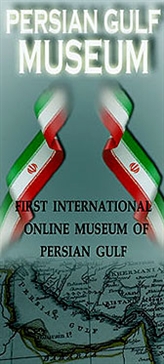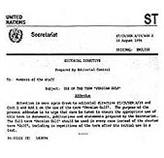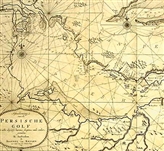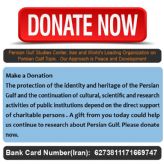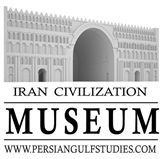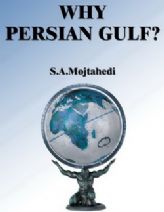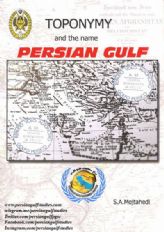H. E. Ban Ki-moon 30 March 2008
Secretary General
The United Nations
New York
Dear Sir
"Undoubtedly the letter of 17 March 2008 to UN Security Council (UN- S/2008/179) by the League of the Arab States invoking article 54 of Chapter VIII of the UN Charter pursuant to the United Arab Emirates’ territorial ambitions towards Iranian islands of Greater Tunb, Lesser Tunb and Abu Musa in the Persian Gulf is the best example of attempt to exploit the dangerous precedence set by the United States of America in forcing the UNSC to pass resolutions against Iran on false pretences. In that unfortunate process the UNSC was required by UN charter to determine existence of threat to peace, breach of the peace, or any act of aggression on the part of Iran, the International Atomic Energy Agency (IAEA) was asked to investigate Iran in order to facilitate the UNSC making that determination. But, the IAEA, still engaged in their investigations, was forced by US and her European allies to refer the dossier of their unfinished investigations to the UNSC under Chapter VII of UN Charter to pass punitive resolutions. This was of course highly irregular, as the then UN Secretary General pointed out that the UNSC was not the appropriate forum to deal with that dossier. Worse still, when IAEA reports of completion of investigations cleared Iran of accusations of strategic use of its nuclear program, UNSC was forced to pass the third punitive resolution against Iran. In my description in international media of the passage of these resolutions as defying all ideas of legality, I warned what the United States had done in that respect was to set dangerous precedence in using international organizations such as UNSC for purposes that are most dangerous to world peace. And the case introduced to UNSC by the Arab League on behalf of the UAE against Iran, evidently encouraged by US president and his vice-president in their recent trips to the Middle East, is a clear example of such exploitation of the said dangerous precedence to the detriment of peace in the region."
Sir,
I, Pirouz Mojtahed-Zadeh, a Political Geography professor at the University of Tarbiat Modares (in Tehran), have been studying the case of Iran’s rights in the region of the Persian Gulf and her sovereignty on islands of Greater Tunb, Lesser Tunb and Abu Musa since these islands were legally returned to Iran in 1971 by the British, in charge of protectorate Emirates at the time, and I assure you that in this letter, I am speaking for the people of Iran who are the rightful owners of their country, including these islands, no matter what may be the reaction of the government of Iran in this context, if any.
Hence, I would like to draw your attention to the following facts in order to see the fictitious nature of the story the Arab League has evidently put together under the influence of the government of UAE, supported by anti-Iranian racial inclinations in the Arab side of the Persian Gulf who for the same racially inclined purposes use a fictitious name for the Persian Gulf which is repeated in Arab League’s letter in question to UNSC, against the clearly stated position of the United Nations in that respect.
The letter of the Arab league, a mishmash of half truths, starts by invoking article 54 of UN Charter which indicates clearly that “the Security Council shall at all times be kept fully informed of activities undertaken or in contemplation under regional arrangements or by regional agencies for the maintenance of international peace and security. In order to keep UNSC at all times informed of activities contrary to international peace and security the complaining party is naturally expected to provide UNSC with the proof as to when and how the alleged activities had taken place. Yet the Arab League’s letter disingenuously avoids providing UNSC even with a definite date for the alleged activities, thus implying that islands in question were recently occupied by Iran, which is an outrageous manipulation of the facts of history. Iran has not said even a word about these islands since 1971 when they were returned to her legally through the MoU signed by Iran and the Emirate of Sharjah under the auspicious of the Foreign Office of the United Kingdom, which was at then responsible for the foreign affairs and territorial defense of their protectorate Emirates. Surely the UNSC can not overlook the fact that activities like the dispatch to UNSC of the letter in question by the Arab League are designed to provoke territorial disputes against Iran by reopening a case that was settled legally and peacefully more than 36 years ago, before the UAE came into existence. Such an undertaking will in deed threaten international peace and security, and/thus ought to provoke the Iranian government to invoke article 54 of the UN Charter against United Arab Emirates or the Arab League for that matter, for agitating peace and security of the region by trying to revive an issue settled so long ago, and by trying to internationalize that agitation through the said letter to UNSC. To facilitate better appreciation of these arguments, I would like to draw your attention to the following evidences of facts related to the case in question:
A- Geographical evidence:
1- The two Tunb islands are situated in the northern half of the Persian Gulf well within Iranian side of the sea. By the Anglo-Iranian general understanding of mid-1960s the islands situated in the northern half of the Persian Gulf belong to Iran and those in the southern half belong to Arabs. Hence, Iran decided in 1970 to withdraw claims on Bahrain islands (UNSC resolution 278 on Bahrain 11 May 1970) and Britain decided to relinquish unsustainable claims to Tunb islands in 1971.
2- Abu Musa Island is situated on the median line of the Persian Gulf half way between Iran and Sharjah and by the power of the 1971 MoU signed between her and the Iranian government under the auspices of the UK Foreign Office, sovereignty over it is shared by the two.
B- Historical evidence:
1- The three islands in question, like all other islands in the northern half of the Persian Gulf have always belonged to Iran.
2- In 1902 the British Foreign Office decided in a secret meeting to occupy these islands for strategic reasons (British Foreign Office document, FO 416//10.
3- The islands of Greater Tunb and Abu Musa, together with Sirri Island also belonging to Iran, were occupied by the British in the name of the Ruler of the Emirate of Sharjah (British Foreign Office document, FO 416/17, p.191). Lesser Tunb was occupied in 1908 (same documents).
4- The Iranians attempted to recover their islands ever since, succeeding in causing interruption in their occupation on several occasions (for details see Pirouz Mojtahed-Zadeh, Security and Territoriality in the Persian Gulf, Chapter 9, Legal and historical arguments, Curzon/ Routledge publication, London 1999, New York 2002).
5- In November 1971 the two sides succeeded in solving the disputes by signing Iran-Sharjah MoU, whereby shared sovereignty over areas of that island designated to each side was enforced (see the MoU in 8 pages, in Pirouz Mojtahed-Zadeh, ibid. Appendix III).
C- Legal evidences:
1- Members of the Arab League, including Iraq, Libya, Algeria, Kuwait, South Yemen, and the United Arab Emirates complained against Iran to the UN Security Council in December 1971 similarly arguing without proof that Iran had occupied the said islands. The Security Council met on December 9, 1971 and after full deliberation decided, without objection, to let the case to rest (UN monthly chronicles, January 1972, Vol. IX, No. 1, Records of the month of December 1971). The question now is that if the UNSC decided at the time of the incident that there was no case for complaint, how Arab League can prove that an event taken place 36 years ago and did not cause concern for peace of the region at the time, causes concern for peace of the region now, and how can it expect the same international body to ignore all relevant international rules and regulations as well as the UN Charter by accepting the same complain again and again.
2- Whereas the United Arab Emirates does not have relevant mandate to proceed with a legal complain in this context at international levels, as will be outlined hereafter, the question is how the Arab League whose member states are not directly or otherwise connected to a territorial dispute that was settled before the creation of the UAE between Iran and the Emirate of Sharjah could presume such authority?
3- Considering the above and the fact that the case of these islands was settled between Iran and the Emirate of Sharjah by the British before the creation of the United Arab Emirates, the UAE cannot defy the Iran-Sharjah MoU that had come into being before their existence, unless such agreements had been officially declared null and void by the newly created state at the time of its creation. Not only did not the UAE declare the arrangements arrived at by Iran and Great Britain (acting as the government of the protectorate emirates of the time) as null and void, but also the Supreme Council of the Union decided in its meeting of 12 May 1992 that foreign obligations of emirates prior to the formation of the UAE will be the obligations of the Union itself.
4- The MoU of November 1971, signed by Iran and Sharjah, is a legal instrument giving no right of interference to any third party according to international law. Also the return of the two Tunb islands to Iran by Great Britain took place on the basis of understanding of the two sides Iran wished no written agreement which would cast doubt on her absolute sovereignty over these islands. Nonetheless, it is noteworthy that permanent representative of the United Kingdom (responsible for territorial defense and foreign relations of the emirates) declared in the Security Council meeting of December 9, 1971 that the arrangement on the islands arrived at by his government and that of Iran in November 1971 constituted a model arrangement for settling similar territorial issues elsewhere in the world (UN monthly chronicles, January 1972, Vol. IX, Records of the month of December 1971).
5- In the meeting of 12 may 1992 of the Supreme Council of the United Arab Emirates, H. H. the Emir of Sharjah who is Iran's partner in the 1971 MoU, refused to entrust his Emirate's authority over the issue of Abu Musa island to the UAE leadership and abandoned that meeting. Hence, UAE President’s act of assuming authority for the case of Abu Musa Island in the absence of the ruler of Sharjah and without his consent renders UAE leadership’s claim on that island illegal. It is noteworthy that UAE leadership has been usurped by the Al-Nahyan ruling family of Abu Dhabi since its emergence, against the text of UAE constitution which prescribes presidency of the union to rotate among the rulers of the seven member emirates and that the vice-president should succeed in the event of the demise of the president.
6- The UAE leadership has for years been trying to present the legal return of Abu Musa and Tunb islands to Iran on November 30th 1971 as a military occupation. In its scenario the visit to Abu Musa Island of an Iranian naval vessel that went to hoist the Iranian flag on that island at that date was enough reason to manufacture that accusation, disregarding the fact that Iranian naval representatives were welcomed officially in Abu Musa by the brother of the Emir of Sharjah. Hoisting the flag of the recipient state on the territory changed hand between two states is a legal practice as US navy hoisted that country's flag at Alaska when it was transferred to US sovereignty from Russia.
At Greater Tunb a misunderstanding between the British commander of the police station and Iraqi elements, planted there to sabotage the legal transfer, resulted in shooting incident between them. In a swift response, the Iranian naval vessel that had just arrived to hoist Iranian flag there arrested those involved and sent them back to the emirate of Ras al-Kheimah. Clearly the UAE attempt in portraying the said local incident at Greater Tunb, together with official welcome extended to Iranian representatives at Abu Musa, as Iran's military occupation of the three islands demonstrate the falsehood nature of UAE claims.
7- The United Arab Emirates distributed on October 27, 1992 a position paper among UN members whereby they asked Iran to adhere to the terms of the 1971 Iran-Sharjah MoU, and at the same time claimed sovereignty over all three islands. That act proved that the UAE was not even aware that by so doing they contradicted themselves and/thus nullified their own claims according to international law where it says; allegans contraria non est audindus, that is; he whose statements contradict each other ought not to be heard (A. D. McNair, The Law of Treaties, Clarendon Press, Oxford 1961, p.185).
D- Other evidences:
1- Arab League’s letter in question speaks of UAE endeavours to settle alleged disputes with Iran through negotiations etc. A more truthful examination of UAE charade in this context will, I think, shed a more realistic light on that claim: Iranian officials attempted to discuss with UAE the case of their claims since publication of those claims. In no less than five occasions Iranian officials initiated direct contacts with the officials of the United Arab Emirates and in all five times the UAE officials declined to talk with Iranians.
2- As an example, it is noteworthy that representatives of Iran and UAE met in Doha (Qatar) on November 18, 1995 to negotiate the issue. Immediately after the preliminary session and introduction of the two delegations, the UAE representatives announced to the news media that negotiations had collapsed because of Iranian intransigency in those talks, without even the actual meeting having had commenced (Pirouz Mojtahed-Zadeh, Iran and UAE. Meeting in the Dark, Middle East International, No. 515, London 15 December 1995, PP. 18-19).
Your Excellency, considering all the above, I deem it appropriate to say that any recognition of this falsehood by any state or international organization as ‘territorial disputes’ between Iran and the UAE will render that government or international body party to attempts in manufacturing territorial disputes that would harm peace and stability in the region of the Persian Gulf, at a time when the United States and Israel are trying hard to exploit any excuse to start their promised war on Iran which will undoubtedly lead to the World War III according to American and other political and military observers.
In my opening remarks I spoke of the dangerous precedence that is set by the USA in forcing UNSC to pass resolutions against Iran’s nuclear energy program without there being a proven case for it. I assure you that the Arab League’s letter of 17 March 2008 to UNSC on behalf of the UAE is the first attempt to exploit this precedence in the hope that, now that the UNSC easily passes resolutions against Iran on the basis of mere allegations by the single superpower, they should try their lock. It is not for the first time that the UAE has put on demonstration the policy of hyena following the lion in the hope of scavenging on the kill. The 1992 distribution of their position paper at the United Nations also came after the US ejection of Iraqi forces from Kuwait which legitimized a powerful US military presence on the Arab soils of the region. Surely the Moslem nations and the Arab League are not oblivious of the fact that America’s wars in the Middle East, including the promised war on Iran, are designed to secure Israel’s geo-strategic wishes of supremacy in that region at the peril of peace and stability for the Moslem world, and any attempt to divide the Moslems will level the grounds for the successful execution of these pro-Israeli agendas in the Middle East.
Yours sincerely
Pirouz Mojtahed-Zadeh
Cc.
H. E. President of Security Council, the United Nations
H. E. Secretary General of the League of Arab Nations
